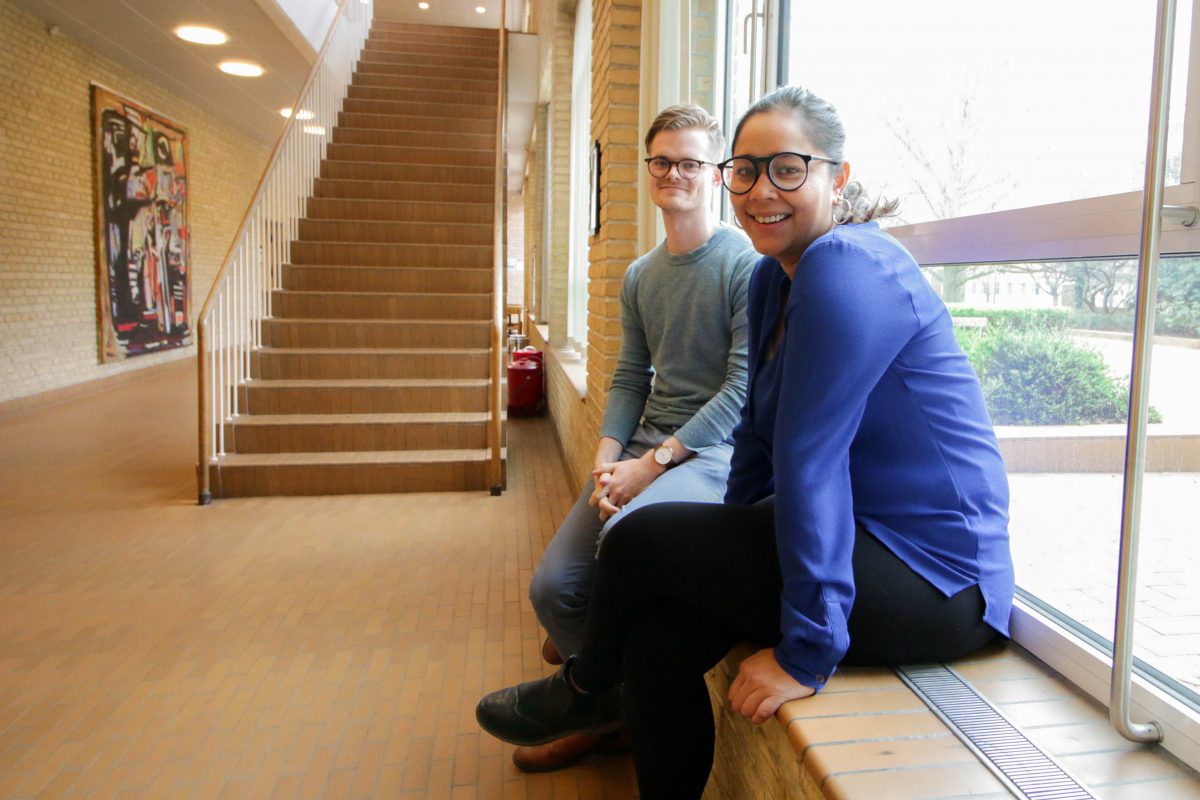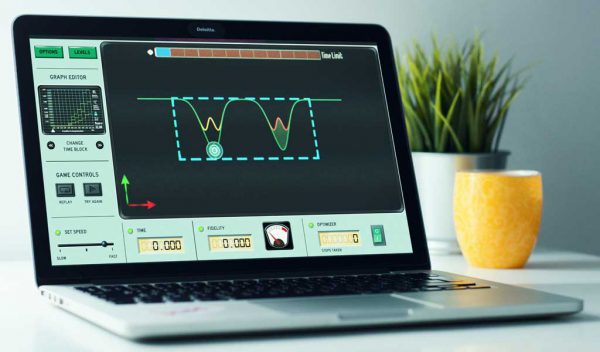
Joining forces in the name of science
How can we involve citizens in the scientific research cycle? And explore new ways to do quantum optimal control?
These questions do not seem related at first, but for Shaeema’s work, they are intertwined. At the end of February 2019, she and her Marie Curie Fellowship met up for 12 days to get to know their network and build the foundations on the theory of quantum optimal control.
Shaeema is working as a Ph.D. student at ScienceAtHome. She started as a volunteer, focusing on the educational perspective of our games. Her interest in passing on knowledge is extremely useful for a citizen science project. Providing our players with an understanding of the science behind the games will hopefully make them more engaged and encourage them to keep playing.
In Quantum Moves 2, we present the players with a tutorial to the game that gives the player enough information on how to play and why their gameplay matters. It’s about linking the simulation in the game to the experiments in the laboratory in a way that is understandable and helpful. This is constantly improved with the feedback from the testings of beginners.
The player’s intuitive workflow combined with the conventional optimization algorithms may lead us to produce high-quality solutions for control of quantum systems.
If you are interested in the science behind Quantum Moves 2 as well we have a separate post about that.
A quantum control network meet-up
Quantum control is not achieved at once and by just one person, but it’s a vital part of the progress in quantum technologies. To expose students to the fundamental need of quantum control for the upcoming quantum technology future, 15 Ph.D. students have been united in a Marie Curie fellowship funded by the European Commission under the QuSCo project. They can use each other as a network, and to communicate with peers during their work.
As a part of this fellowship, a QuSCo training program took place for two weeks where all the students got together to explore more about quantum control and quantum sensing. We frequently mention quantum control on our blog but quantum sensing is something new. As of now, X-rays and MRIs are used to scan and do imaging of the body, but the equipment today is not sensitive enough to detect small cell damages. As of now, we can’t image biomolecules to determine structural and dynamical information on e.g. proteins in the body. Quantum sensors will be extremely precise and have high resolution compared to the current technology. This is useful if we want to detect diseases at early stages and therefore enables faster treatment. It will also help in the quality control of food, pharmaceuticals and develop personalized medicine.
The quantum sensor is just a single example of a quantum technology that requires quantum optimal control to be realized to its full potential. Another famous example is quantum computing which is exactly one of the challenges the players face in Quantum Moves 2. In this challenge, the player needs to move an atom, represented in the game by a liquid, from A to B without spilling.
On top of receiving new knowledge about quantum control and quantum sensing, the purpose at QuSCo was also to acquire new skills. The program introduced the students to a great deal of outreach communication. Research should be communicated to citizens and not only between experts. This skill is something many researchers would like to acquire to present their findings to a wider audience.
For Shaeema, the Marie Curie fellowship is a great community since it is based on internationals like herself. As a part of the fellowship program, Shaeema gets to choose two of the other fellows’ universities to go to visit. It enables her to share her research and to learn more about how they approach quantum research.
The outside experience of a community
Shaeema actually didn’t go alone to the QuSCo school. Another Ph.D. student working at ScienceAtHome, Jesper Hasseriis Mohr Jensen, was also welcomed to join. Jesper is not part of a Marie Curie Fellowship, but he works on some of the same projects as Shaeema. He came along partly to help introduce the Quantum Moves 2 game. For one of the outreach workshops, the Quantum Composer also came into play which Jesper is one of the creators of. The Quantum Composer is a visualization and simulation tool. The students were to try and use it for outreach purposes, relating to their own work.
Jesper has a programming-heavy background and is involved with developing the software that makes solving quantum control problems possible - both in the context of applications such as Quantum Moves 2 or Quantum Composer and in other research projects. Still, he finds outreach extremely important. It’s something he and the other researchers at ScienceAtHome learned through the work with the citizen science games. Since this skill is not really included in classic science degrees, it was very relevant that the QuSCo school brought up the importance of it.
The cross-border communication among research groups and Ph.D. students was the most interesting and special for Jesper about the Marie Curie fellowship.
“Exchanging research verbally with colleagues is always very illuminating. There is room for a broad overview, the appropriate level of detail, and insights that may otherwise be less obvious to extract from published articles (the main method of communication between scientists). The QuSCo network is a great opportunity for early-stage researchers to come together for this purpose and at the same time foster a great sense of community and perspective.
.” - Jesper Hasseriis Mohr Jensen
Furthermore, he emphasized the great opportunity it was to meet some of the researchers he knew from their work.
Overall the Marie Curie fellowship provides you with a group of interesting students that you follow from the very beginning and are with you during the process of your Ph.D. work. A group of people who broaden the academic perspectives as well as being motivationally influencing.
Are you dreaming of science studies in the future? Comment below or write to us at support@scienceathome.org and let us know your interests! We are always excited to know what inspires and drives our younger audience. Maybe you will become the next Shaeema or Jesper.

